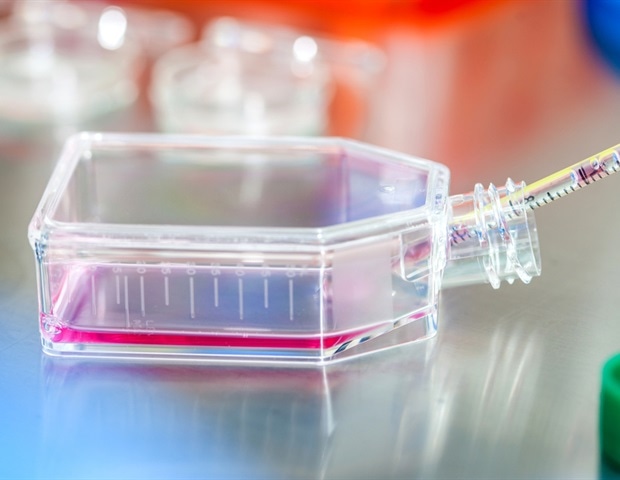Scientists at the Max Planck Institute of Biochemistry in Munich, Germany, use 4 PIPETBOY GENIUS serological pipet controllers from INTEGRA Biosciences to streamline their cell culture workflows. These ergonomic devices support fast and precise serological pipetting, while the aliquoting function makes repetitive tasks more comfortable for users.
The department at the Institute of Biochemistry has around 35 staff, with one-third of them working across 2 cell culture labs, handling a variety of mammalian and stem cell lines. The department recently acquired 4 PIPETBOY GENIUS serological pipet controllers to further enhance the accuracy, precision and speed of its liquid handling workflows. Albert Ries, a laboratory technician at the institute, explained the benefits of the new repeat dispense function, which works in combination with INTEGRA serological pipets:
We really appreciate the repeat dispensing function, which we’ve found incredibly useful; it’s so convenient to simply press a button and dispense multiple aliquots from a single aspiration. We don’t have to read the volume every time, and filling wells is fast and accurate. Of the many pipetting aids I worked with, PIPETBOY GENIUS controllers are the most sensitive to variations in finger pressure, giving us extremely fine control over dispensing speeds and liquid flow. This is very helpful for avoiding damage to delicate cell monolayers or loss of valuable reagents and unwanted mixing between neighboring wells due to spill-over when filling small multiwell plates.”
Albert Ries, Laboratory Technician, Max Planck Institute of Biochemistry
Ergonomics is also a priority for Albert and his team: “We often spend hours at the bench pipetting, so having equipment that makes the process more comfortable and efficient is essential for reducing our mental and physical fatigue. The PIPETBOY GENIUS is incredibly light, and I’m impressed that INTEGRA managed to fit all its advanced features into such a compact design. The company’s engineers really took the time to talk with people who work with cell cultures and observe what we actually need. It has significantly improved our workflow and become popular across the cell culture labs. I’d recommend it to anyone in the field,” Albert concluded.
